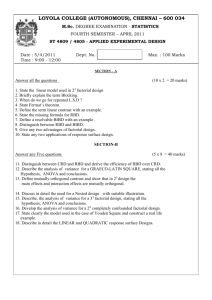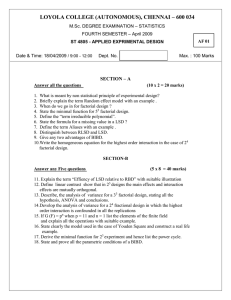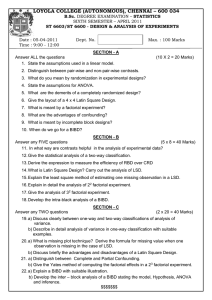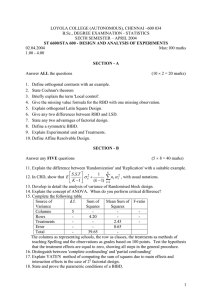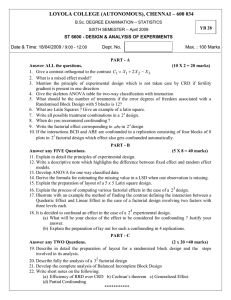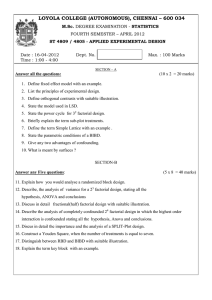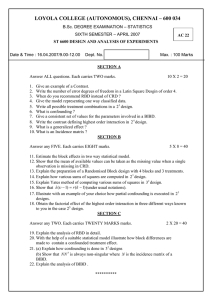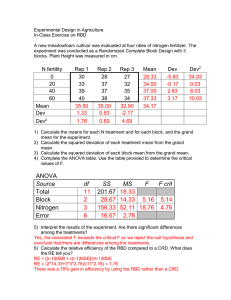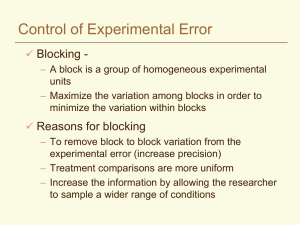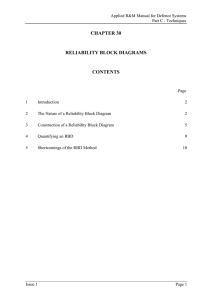LOYOLA COLLEGE (AUTONOMOUS), CHENNAI – 600 034
advertisement
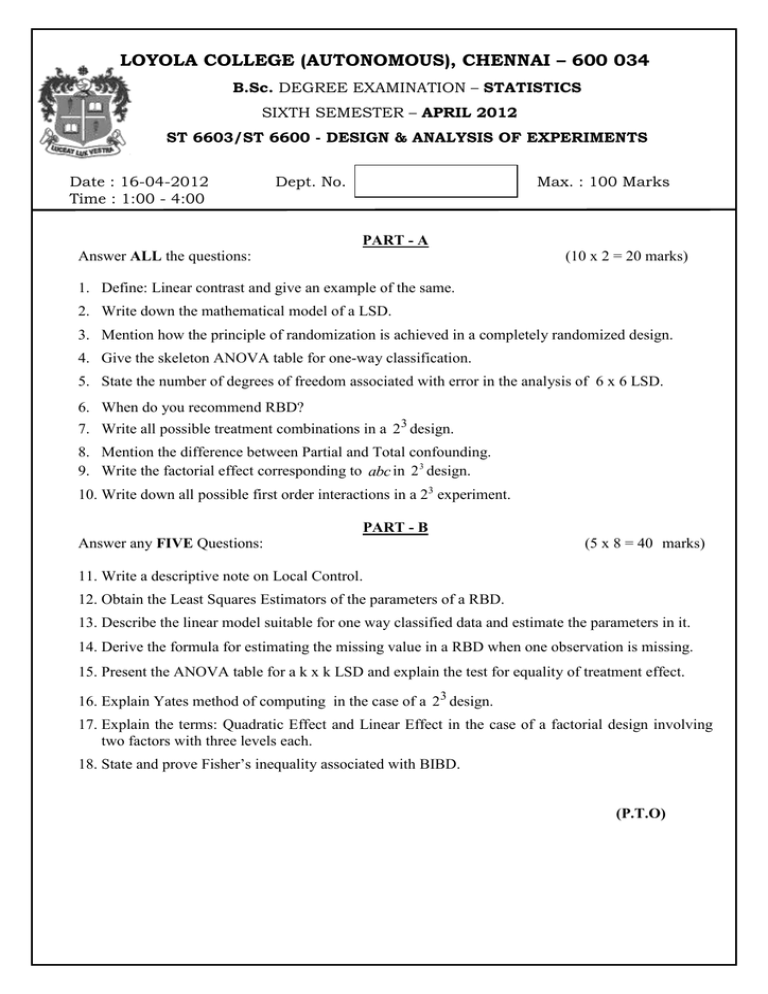
LOYOLA COLLEGE (AUTONOMOUS), CHENNAI – 600 034 B.Sc. DEGREE EXAMINATION – STATISTICS SIXTH SEMESTER – APRIL 2012 ST 6603/ST 6600 - DESIGN & ANALYSIS OF EXPERIMENTS Date : 16-04-2012 Time : 1:00 - 4:00 Dept. No. Max. : 100 Marks PART - A Answer ALL the questions: (10 x 2 = 20 marks) 1. Define: Linear contrast and give an example of the same. 2. Write down the mathematical model of a LSD. 3. Mention how the principle of randomization is achieved in a completely randomized design. 4. Give the skeleton ANOVA table for one-way classification. 5. State the number of degrees of freedom associated with error in the analysis of 6 x 6 LSD. 6. When do you recommend RBD? 7. Write all possible treatment combinations in a 23 design. 8. Mention the difference between Partial and Total confounding. 9. Write the factorial effect corresponding to abc in 2 3 design. 10. Write down all possible first order interactions in a 23 experiment. PART - B Answer any FIVE Questions: (5 x 8 = 40 marks) 11. Write a descriptive note on Local Control. 12. Obtain the Least Squares Estimators of the parameters of a RBD. 13. Describe the linear model suitable for one way classified data and estimate the parameters in it. 14. Derive the formula for estimating the missing value in a RBD when one observation is missing. 15. Present the ANOVA table for a k x k LSD and explain the test for equality of treatment effect. 16. Explain Yates method of computing in the case of a 23 design. 17. Explain the terms: Quadratic Effect and Linear Effect in the case of a factorial design involving two factors with three levels each. 18. State and prove Fisher’s inequality associated with BIBD. (P.T.O) PART - C Answer any TWO Questions: (2 x 20 =40 marks) 19. Describe in detail the preparation of layout for a Randomized Block Design and the steps involved in its analysis. 20. Describe fully the analysis of a 32 factorial design. 21. Explain Balanced Incomplete Block Design and describe in detail the intra-block analysis for the same. 22. (a) Explain the analysis of 2 3 experimental design wherein the highest order interaction effect is totally confounded. (b) Explain : (i) Duncan’s Multiple Range Test (ii) Cochran’s Theorem. $$$$$$$
